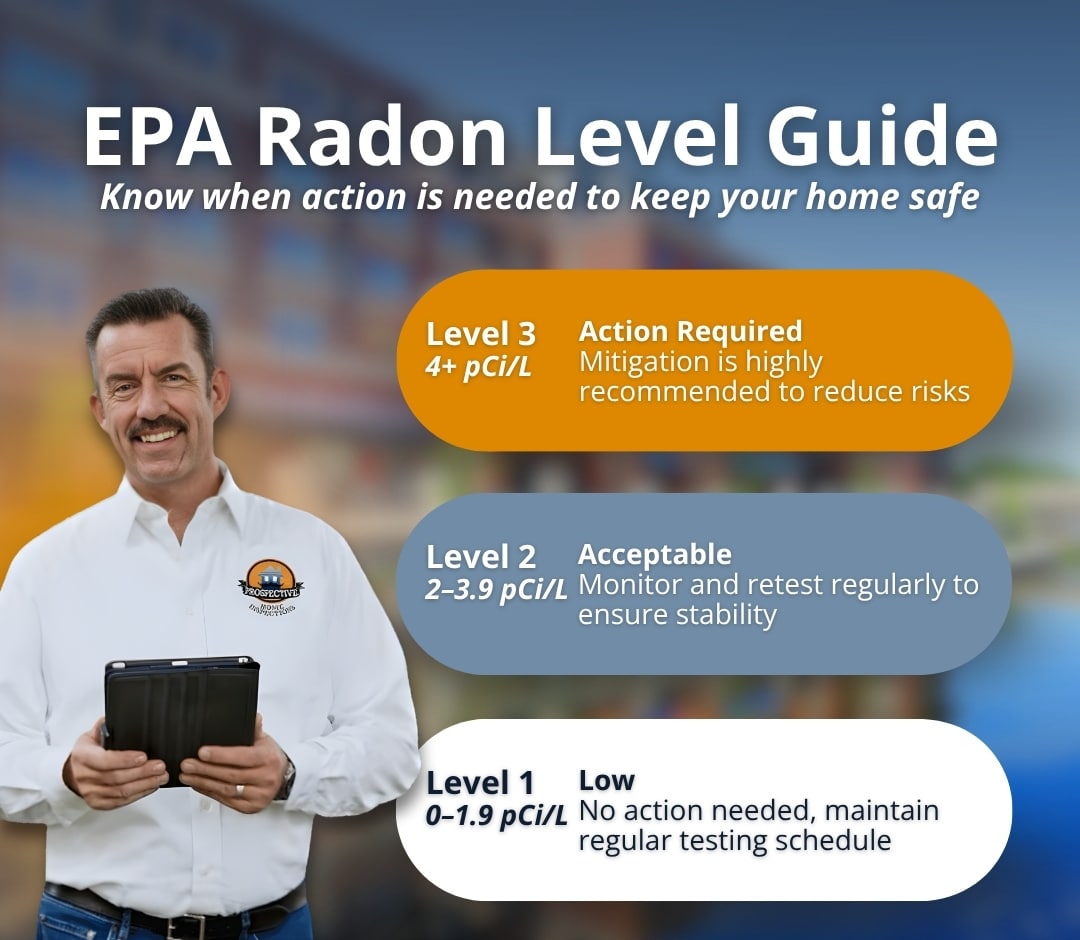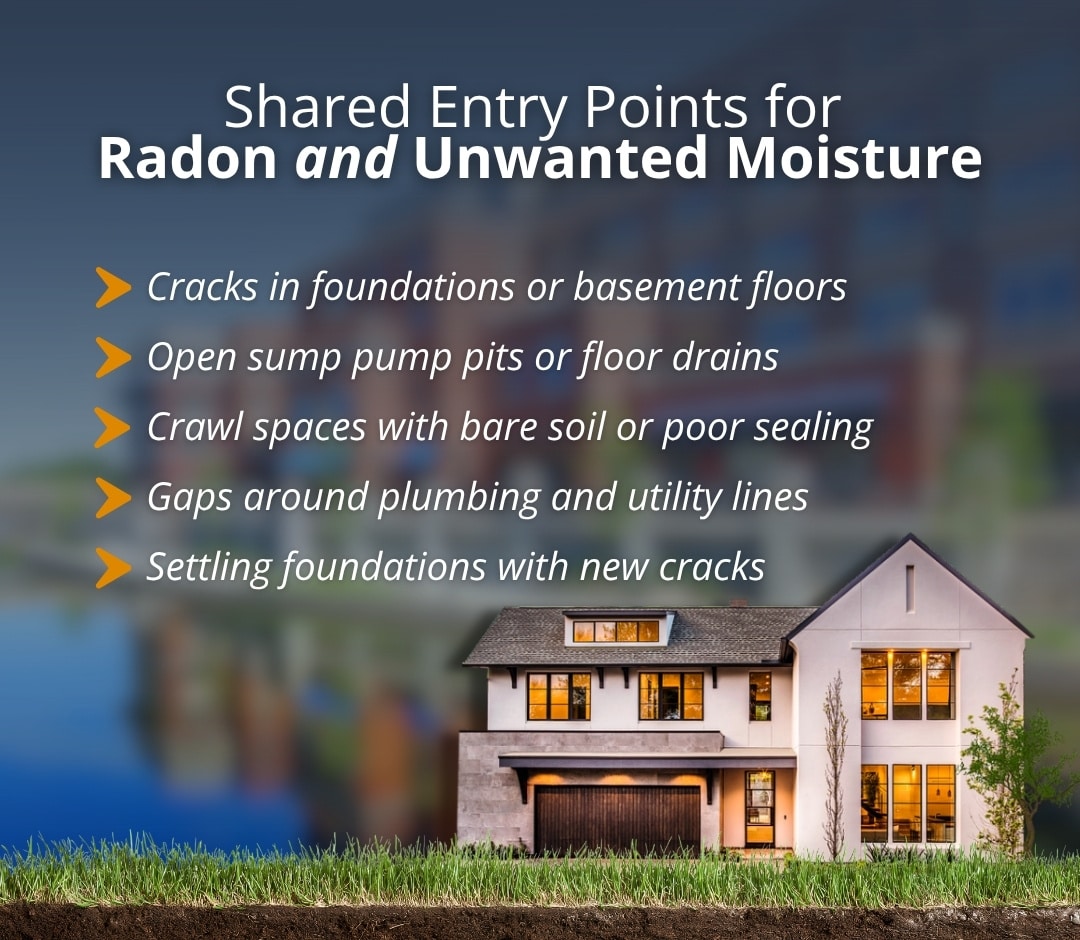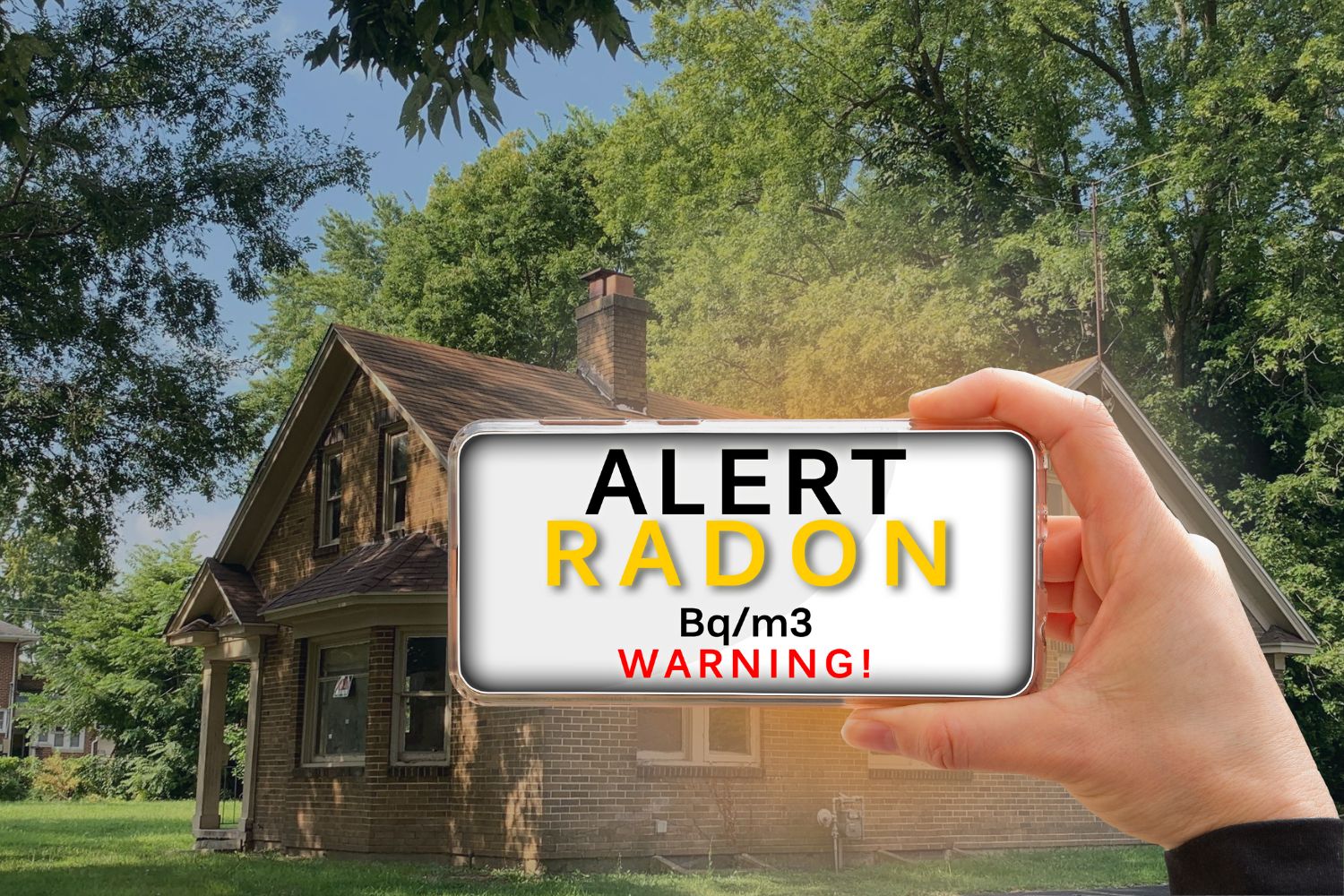You’ve found a home that checks all the boxes. The layout feels right, the location is perfect, and the price fits your budget. Then the inspection report mentions elevated radon levels in the basement or lower levels, and you start wondering whether the deal is worth it.
Radon issues don’t have to derail your home purchase. With accurate testing, clear information, and a solid mitigation plan, you can still move forward with confidence. This guide explains what elevated radon means, how it affects home value and safety, and why working with a qualified inspection and testing company like Prospective Home Inspections in Naperville, Illinois, is essential before you decide.
What Is Radon and Why Does It Matter?
Radon is a naturally occurring gas that forms when uranium in soil and rock breaks down. It seeps into homes through tiny openings such as cracks in the foundation, sump pump basins, crawl spaces, or gaps around plumbing and wiring. Because it is colorless and odorless, you would never know it’s there without testing.
The Environmental Protection Agency (EPA) estimates that radon exposure is responsible for over 21,000 lung cancer deaths per year in the United States.
In Illinois, radon levels are higher than the national average because of the state’s soil composition.
In fact, the Illinois Emergency Management Agency (IEMA) reports that about 45% of tested homes exceed the EPA action level of 4 picocuries per liter (pCi/L).
That means nearly half of the homes in Naperville and the surrounding suburbs could have unsafe radon concentrations if not tested and treated properly.

Why Basements Are the Biggest Concern
Basements are often ground zero for radon buildup. Sitting below grade, they’re surrounded by soil that naturally releases radon gas. As indoor and outdoor air pressures shift, the gas gets pulled through cracks, joints, sump pump openings, or gaps around plumbing and wiring.
Once inside, radon collects in enclosed or poorly ventilated areas. Finished basements used as living or storage spaces are especially at risk. Even if you rarely go downstairs, warm air rising through the home can create a stack effect that draws gases upward through floors and walls.
But basements aren’t the only concern. Crawl spaces, slab foundations, and other homes can also test high when radon seeps in through foundation cracks, gaps, or utility openings.
In fact, our team has seen elevated readings in slab-on-concrete homes throughout Illinois. Proof that every property type should be tested, no matter the age or design.
Bottom line: The only way to know your true risk is through professional radon testing, regardless of foundation type. Every home has the potential for elevated levels, which is why consistent testing is part of every full inspection Prospective performs.
How Elevated Radon Levels Affect a Home Purchase
The presence of radon in a home you want to buy does not mean you should walk away. What matters is understanding the risk, cost, and steps involved in fixing the problem.
Radon can influence a home purchase in several ways:
- Negotiation power: If an inspection reveals elevated levels, you can request that the seller install a mitigation system or lower the sale price to cover the expense.
- Financing and insurance: Some lenders require radon testing before closing, especially for FHA or VA loans. Having results documented can help streamline the process.
- Resale value: Addressing radon before purchase gives you an advantage when it’s time to sell. Future buyers will appreciate knowing the home is safe and compliant.
- Peace of mind: Knowing radon levels are under control lets you enjoy your home without wondering if the air you breathe is putting your family at risk.
Homes in Illinois can be safely lived in even after a radon issue is discovered, as long as mitigation is completed correctly and follow-up testing confirms improvement.
What Happens During a Radon Test
Radon testing is a simple but crucial part of a full home inspection. At Prospective Home Inspections, the process is performed by certified inspectors using calibrated equipment.
The testing device is placed in the basement or the lowest livable level of the home for a minimum of 48 hours. During this time, it continuously monitors radon concentrations and logs average readings. After the testing period, your inspector retrieves the device and analyzes the results to determine if further action is needed.
You’ll receive a clear report with actual measurements, easy-to-read charts, and recommendations. If levels exceed the EPA guideline, the inspector will explain the next steps and discuss mitigation options.
Testing is performed on the lowest livable level of the home, regardless of whether that’s a basement, crawl space, or slab foundation.
What Radon Mitigation Involves
Radon mitigation is the process of reducing radon gas inside a building to a safe level. The most common approach is sub-slab depressurization, which involves installing a PVC vent pipe and fan system that pulls radon from beneath the home and releases it safely above the roofline.
For homes in the Naperville area, typical mitigation systems cost between $1,200 and $2,500, depending on home size, foundation type, and the complexity of installation.
Additional mitigation methods may include:
- Sealing cracks and openings in the foundation
- Installing a vapor barrier in crawl spaces
- Improving ventilation and airflow in the basement
A follow-up test is always required after installation to confirm that radon levels have dropped below 4 pCi/L.
Working with your home inspector to coordinate testing before and after mitigation ensures that results are accurate and improvements are verified.
How Radon Connects to Other Home Issues
One reason Prospective Home Inspections includes radon testing as part of their broader services is that radon rarely exists in isolation. It often signals other concerns with the home’s structure or moisture management.
- Moisture Intrusion: Cracks or gaps that allow radon in also allow groundwater and humidity to enter. That can lead to mold growth, wood rot, and poor air quality.
- Ventilation and HVAC Systems: If your HVAC system is outdated or inefficient, it might contribute to uneven air pressure that draws radon upward. Inspecting ducts, filters, and ventilation systems ensures proper balance.
- Foundation and Drainage: Homes with poor drainage or foundation settling tend to have more radon entry points. During a general inspection, foundation integrity and exterior grading are also checked.
- By identifying how these issues overlap, Prospective helps you form a complete picture of your home’s health, not just a single test result.
The same pathways that let in radon often allow moisture, mold, and air quality issues to develop. That’s why Prospective tests for all three.

What to Do If Radon Levels Are High
If your inspection report shows elevated radon, here’s a clear action plan:
- Discuss results with your inspector to understand how high the levels are and what may be causing them.
- Get estimates from licensed mitigation professionals before closing so you can negotiate or plan accordingly.
- Consider short-term and long-term exposure. If you plan to finish or use the basement frequently, mitigation is essential.
- Re-test after mitigation to confirm that the system is functioning correctly.
- Keep documentation. Save your test results and mitigation warranty for future resale or refinancing.
Radon issues are highly fixable, especially when handled proactively during the buying process.
Other Related Questions
Is radon connected to moisture problems in basements?
Often. Damp conditions make it easier for radon to enter through porous concrete or floor joints. Proper ventilation and a professional inspection can uncover both issues early.
Should I test for radon if the home already has a mitigation system?
Yes. Systems need periodic retesting to confirm they’re still effective, especially after remodeling or HVAC updates.
Can mold and radon appear together?
They can. Poor ventilation or high humidity supports both problems, which is why many homeowners pair radon testing with mold inspection.
Is it better to test for radon during a home inspection or after moving in?
During the inspection is ideal. You’ll have the data needed to negotiate or plan mitigation before taking ownership.
When to Call a Professional
If you’re in the process of buying a home in Naperville, Aurora, or nearby suburbs, contact Prospective Home Inspections before you make an offer. Their certified inspectors handle comprehensive home inspections, radon testing, and optional mold assessments.
They focus on giving buyers actionable information rather than surface-level reports. Whether your concern is air quality, foundation health, or hidden defects, Prospective helps you make confident decisions backed by data.
Professional inspection now prevents expensive surprises later, ensuring your family’s safety and peace of mind in the home you choose.
Conclusion
Buying a home with elevated radon in the basement can sound intimidating, but with the right help, it’s completely manageable. The key is knowledge and professional support. Prospective Home Inspections gives Illinois homebuyers that advantage through accurate testing, thorough inspections, and clear next steps.
Instead of seeing radon as a deal breaker, view it as an opportunity to ensure your future home is safe, efficient, and well-documented. With Prospective’s help, you can close confidently knowing you’ve taken the right steps to protect your health and your investment.






